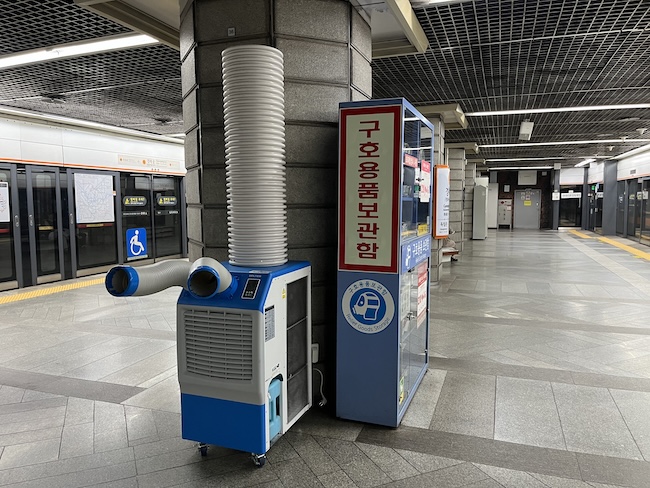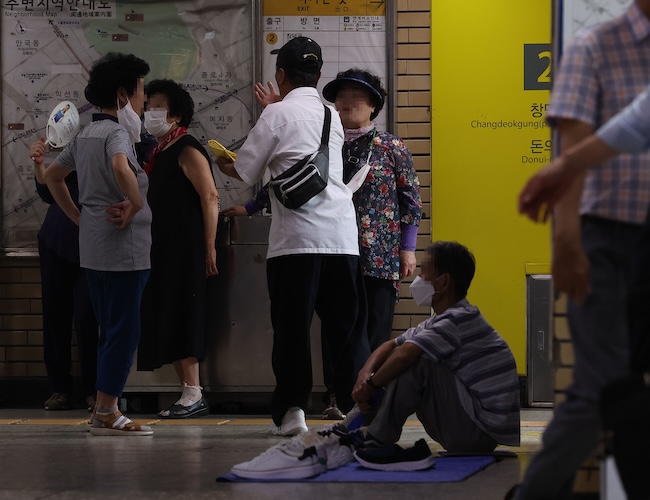SEOUL, Aug. 20 (Korea Bizwire) – For Ko, a 31-year-old office worker who commutes via the Nambu Bus Terminal station on Seoul’s Subway Line 3, summer mornings and evenings are a sweaty ordeal.
“It feels like a sauna in there,” she said, describing her daily struggle with the lack of air conditioning in the subway station.
As Seoul endures its 20th consecutive day under an extreme heat warning, first issued on July 31, the discomfort of spending time in non-air-conditioned subway stations has become a pressing issue for many commuters.
According to Seoul Metro, which operates the city’s sprawling subway system, 50 out of 275 stations on Lines 1 to 8 — a staggering 18.18% — lack air conditioning facilities.
While 24 of these are above-ground stations where installing cooling systems is not feasible, the remaining 26 underground stations pose a more complex challenge.
“Each station would require at least 63 billion won (approximately $47 million) for air conditioning installation, making it difficult to secure the necessary funding,” a Seoul Metro official explained.
The majority of these stations are decades old, and retrofitting them with modern cooling systems would necessitate extensive remodeling.

According to Seoul Metro, which operates the city’s sprawling subway system, 50 out of 275 stations on Lines 1 to 8 — a staggering 18.18% — lack air conditioning facilities. (Image courtesy of Yonhap)
To mitigate passenger discomfort, Seoul Metro has implemented stopgap measures such as placing portable air coolers in underground stations and setting up air-conditioned waiting areas in above-ground stations.
However, many commuters find these solutions inadequate.
On August 16, as Seoul’s daytime temperature peaked at 34.3 degrees Celsius, the limitations of these measures were evident.
At Anguk Station on Line 3, 34-year-old office worker Lim Jin-sol huddled near a portable air cooler, noting, “It’s only cool right in front of the machine, so I try to stay as close as possible while waiting for the train.”
Even more frustrating for passengers is the sight of non-functional cooling equipment. At nearby Gyeongbokgung Station, all four portable air coolers on the platform were unplugged or switched off during the evening rush hour.
A station official cited various technical issues, including lack of power outlets and missing circuit breakers, as reasons for the inoperative units.
The heat isn’t just affecting commuters. Subway employees, who spend their entire workday in these sweltering conditions, are particularly hard-hit.
A station worker in his 50s at Anguk Station showed off a newly purchased headband, saying, “I bought this for the first time this summer to absorb sweat since we don’t have air conditioning.”
Another subway worker expressed his frustration: “We only have two air coolers at each end of the platform, which is far from enough. It’s unbearably hot and difficult, but we just endure it, waiting for our transfer to a different station.”
M. H. Lee (mhlee@koreabizwire.com)







